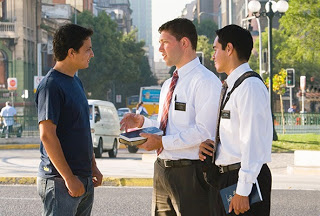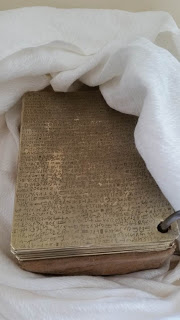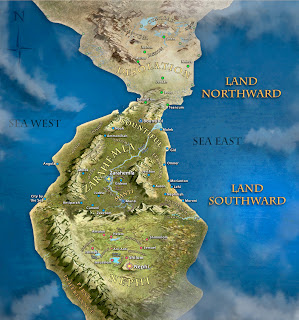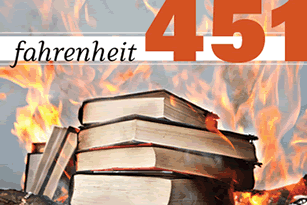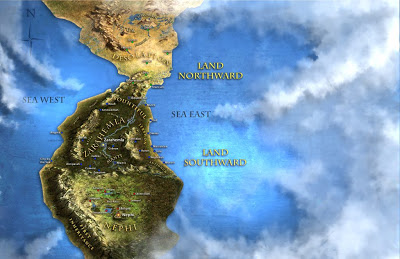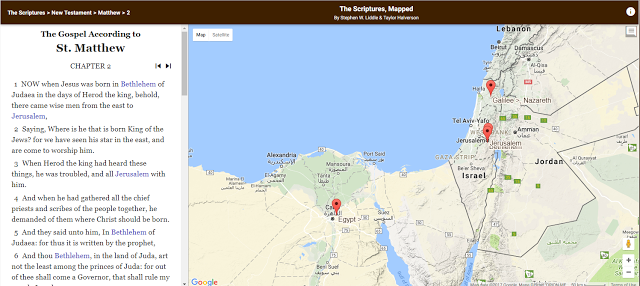The missionaries are defenseless – Part 2 – DNA Gospel Topics essay
The questions are some variation of this: “If the Book of Mormon is true, why is Native American DNA Asian instead of Hebrew (or Middle Eastern)?”
I’d be surprised if any proselyting missionary in an internet-savvy area doesn’t hear this question daily.
The expected answer, of course, is the Gospel Topics essay on DNA, which you can read here:
https://www.lds.org/topics/book-of-mormon-and-dna-studies?lang=eng
I’ll include relevant quotations in this post so you don’t have to go to that link, but it might be helpful to have the essay open in another screen if you’re reading this on your computer.
These essays have done a lot to educate people, LDS and otherwise, and get them thinking about difficult questions. But because this DNA essay is trying to support and defend the Mesoamerican and two-Cumorahs theory, it is not very effective when viewed from the perspective of missionaries, investigators, and faithful members who want answers.
You’ll notice that footnote 6 claims “the Church takes no official position except that the events occurred in the Americas.” That is true of the Church, but not of this essay, as I’ll show below.
A major problem for many investigators (and members) is that this essay establishes Darwinian evolution as a foundation for understanding the DNA issue with the Book of Mormon, a topic I address in the next post of this seriest. For now, I emphasize that I’m not focusing on the science vs religion issue here. Instead, I’m focusing on how missionaries answer questions about the DNA.
(On the merits, I think it would make more sense to consider multiple working hypotheses instead of embracing only one–especially when the essay does not explain how the evolution hypothesis it embraces can be reconciled with the scriptures.)
_______________
The first problem is obvious: this is an academic essay written by and for scientists and those used to reading scientific literature (or at least Popular Science).
It was not written for teenagers and ordinary investigators (other than the rare scientist who might be interested in the Church).
Because there are a lot of quotations below, I’ll put all quotations in blue, with my comments in black or red for the rest of this post.
_______________
Here’s an excerpt from the opening paragraphs of the essay to give you an idea of the tone and content:
“Some have contended that the migrations mentioned in the Book of Mormon did not occur because the majority of DNA identified to date in modern native peoples most closely resembles that of eastern Asian populations.2
[Note: Many missionaries and investigators are not familiar with footnote formatting and skip over them. Just as well, because when you click on this footnote, it goes to more academic verbiage and citations of LDS journals that adamantly and exclusively promote the Mesoamerican and two-Cumorahs theories.]
“Basic principles of population genetics suggest the need for a more careful approach to the data. The conclusions of genetics, like those of any science, are tentative, and much work remains to be done to fully understand the origins of the native populations of the Americas.”
_______________
For a teenager, a missionary, a non-scientist, and the vast majority of investigators, this essay is word salad.
Fortunately, buried at the end of the third paragraph if anyone reads that far, is the short version:
“In short, DNA studies cannot be used decisively to either affirm or reject the historical authenticity of the Book of Mormon.”
Compare that to the summary put out by one of the most popular Christian ministries (millions of copies of their DVD distributed, plus widespread online presence):
“This documentary accurately presents the consensus of the scientific community that northern Asia — not Israel — is the place of origin of the Native American Indians.”
The messaging disparity is obvious. It’s not even close.
Now, let’s look at the content of the Gospel Topics Essay.
________________
The first thing to note is that nowhere does the essay cite the Book of Mormon!
This leaves it up to investigators (and the Christian ministries that educate their members) to point out relevant passages to the missionaries.
Investigators who go to the Internet will find articles such as these that do cite the scriptures and the words of the prophets and apostles:
While the essay does not cite scripture or seek to reconcile its theories with the scriptures, it does cite other articles that do. But these articles are the same ones cited by the detractors because they all promote the Mesoamerican theory, which is based on the premise that Joseph Smith and Oliver Cowdery were ignorant speculators who misled the Church about the New York location of Cumorah.
The second thing to note is that the essay itself embraces the Mesoamerican theory in several places. For example, look at this paragraph:
“The Book of Mormon itself, however, does not claim that the peoples it describes were either the predominant or the exclusive inhabitants of the lands they occupied. In fact, cultural and demographic clues in its text hint at the presence of other groups.6”
Here’s note 6:
“John L. Sorenson, “When Lehi’s Party Arrived in the Land, Did They Find Others There?” Journal of Book of Mormon Studies 1, no. 1 (Fall 1992): 1–34. These arguments were summarized more recently in John L. Sorenson, Mormon’s Codex: An Ancient American Book (Provo, UT: Neal A. Maxwell Institute, 2013). Sorenson suggests that indicators in the book’s text makes it “inescapable that there were substantial populations in the ‘promised land’ throughout the period of the Nephite record, and probably in the Jaredite era also.” (“When Lehi’s Party Arrived,” 34). Though there are several plausible hypotheses regarding the geographic locations of Book of Mormon events, the Church takes no official position except that the events occurred in the Americas. See Book of Mormon Seminary Teacher Manual (2012): 196. (emphasis added)”
The essay purports to be neutral on geography, but it cites Mormon’s Codex, the epitome of Mesoamerican dogma. As an example, in Mormon’s Codex, John Sorenson ridicules the idea of the Hill Cumorah being in New York: “There remain Latter-day Saints who insist that the final destruction of the Nephites took place in New York, but any such idea is manifestly absurd. Hundreds of thousands of Nephites traipsing across the Mississippi Valley to New York, pursued (why?) by hundreds of thousands of Lamanites, is a scenario worthy only of a witless sci-fi movie, not of history.” Mormon’s Codex, p. 688.
Any investigator, missionary, or member who reads this essay, including the footnotes, can come away with no impression other than that the Church endorses the Mesoamerican theory. This makes the quotation from the Seminary manual about “neutrality” look ridiculous when compared with the references cited in the essay.
In fact, individuals associated with the Conclave cite these essays as evidence that the Church does quietly endorse the Mesoamerican theory.
Now, imagine you’re a missionary trying to answer the DNA question. You have an investigator who knows how to read. He/she is sincerely interested, so he/she reads the essay and the notes and the references. Let’s say this investigator knows about Letter VII (unlike the missionary). The investigator points out that the Church’s own web page is directly contradicting what Joseph and Oliver taught.
And the investigator is correct.
We now have an official essay on lds.org that claims what Joseph and Oliver taught is manifestly absurd.
This is exactly what our LDS scholars and educators have been teaching for decades, of course, but many members of the Church don’t realize it. This is the basic principle that underlies the Mesoamerican and two-Cumorahs theories.
And it’s not only Joseph and Oliver whose ideas were “manifestly absurd.” Our LDS scholars and educators teach that all the prophets and apostles who agreed with Joseph and Oliver about Cumorah being in New York, including all of Joseph’s contemporaries and more recent ones such as Joseph Fielding Smith and Marion G. Romney, were merely expressing their own opinions and were wrong, even when they spoke about this in General Conference.
How does the missionary explain that?
The assumption, apparently, is that people won’t actually read these essays, or if they do, they won’t read the notes, or if they do, they won’t read the references.
I don’t think that’s a sustainable assumption.
_______________________
There’s more.
Look at the paragraph again:
“The Book of Mormon itself, however, does not claim that the peoples it describes were either the predominant or the exclusive inhabitants of the lands they occupied. In fact, cultural and demographic clues in its text hint at the presence of other groups.”
Juxtapose that with what Lehi said when he landed:
2 Nephi 1:8 And behold, it is wisdom that this land should be kept as yet from the knowledge of other nations; for behold, many nations would overrun the land, that there would be no place for an inheritance.
9 Wherefore, I, Lehi, have obtained a promise, that inasmuch as those whom the Lord God shall bring out of the land of Jerusalem shall keep his commandments, they shall prosper upon the face of this land; and they shall be kept from all other nations, that they may possess this land unto themselves. And if it so be that they shall keep his commandments they shall be blessed upon the face of this land, and there shall be none to molest them, nor to take away the land of their inheritance; and they shall dwell safely forever.
I don’t want to get into 2D arguments about semantics, but the basic premise of the Mesoamerican theory is that Lehi’s people were absorbed into the much more numerous and extensive Mayan civilization. All traces of Lehi’s people disappeared, except for some cultural artifacts or “correspondences” that are common to most human societies.
The basic premise of Moroni’s America (the North American setting, based on one Cumorah in New York) is that Lehi’s people encounters small groups of indigenous hunter/gatherers who joined with and followed Nephi and Laman, respectively, and that Lehi’s descendants are still identifiable today (e.g., D&C 28, 30, 32).
Which interpretation seems more congruent with Lehi’s teachings?
________________________
There’s more.
Look at this paragraph:
Joseph Smith appears to have been open to the idea of migrations other than those described in the Book of Mormon,8 and many Latter-day Saint leaders and scholars over the past century have found the Book of Mormon account to be fully consistent with the presence of other established populations.9
Note 8: “Facts Are Stubborn Things,” Times and Seasons 3 (Sept. 15, 1842): 922. This article is unattributed but was published under Joseph Smith’s editorship. See also Hugh Nibley, Lehi in the Desert, The World of the Jaredites, There Were Jaredites (Salt Lake City and Provo, UT: Deseret Book and Foundation for Ancient Research and Mormon Studies, 1988): 250.”
This note perpetuates the mistaken narrative that Joseph endorsed the anonymous articles in the Times and Seasons. This narrative is part of the premise of the Mesoamerican theory; i.e., that Joseph was an ignorant speculator who misled the Church and expected scholars to figure out things he didn’t know, such as the location of Cumorah and the setting for the Book of Mormon. This means the entire Church was misled until our modern scholars rescued us from false tradition and figured out that Cumorah is actually in southern Mexico.
Note 9 is even worse.
“For a review of statements on this subject, see Matthew Roper, “Nephi’s Neighbors: Book of Mormon Peoples and Pre-Columbian Populations,” FARMS Review 15, no. 2 (2003): 91–128.”
I addressed this reference on my blog here, and I could say more about it now, but suffice it to say, it firmly promotes the Mesoamerican theory.
In fact, there is nothing in this Gospel Topics essay that presents any ideas that support what Joseph taught about Cumorah or support any geography theories other than Mesoamerica, despite the reference to neutrality in the Seminary manual, which is rendered meaningless by the essay.
________________________
There’s more.
The last paragraph before the even more obscure section (Understanding the Genetic Evidence) says this:
“What seems clear is that the DNA of Book of Mormon peoples likely represented only a fraction of all DNA in ancient America. Finding and clearly identifying their DNA today may be asking more of the science of population genetics than it is capable of providing.”
That looks like a fair statement, but when you analyze it, you wonder whether it was just poorly written or designed to obfuscate.
“What seems clear…” Is it clear, or does it merely “seem” clear?
“The DNA of Book of Mormon peoples likely represented…” Likely? It seems clear that this DNA likely?
The essay is hedging so much it really says next to nothing.
“represented only a fraction of all DNA in ancient America.” We have to infer they mean “human DNA” or the sentence states the obvious no matter what percentage of the human population was Lehi’s descendants; i.e., most DNA in ancient America is plant and animal.
Even with the inference, the sentence is meaningless because a fraction can be 1% or 99%. It can even be 150%. Assuming the sentence means to say a small or tiny percentage of human DNA, is there anything in the Book of Mormon text to support this idea? I’m not aware of any such passage. If we’re writing about the Book of Mormon, why not cite any scriptures?
In my view, of course, the Book of Mormon took place in what is now the United States, mostly east of the Mississippi. I would expect most indigenous DNA in western North America and Central and South America to be Asian, partly because of the Jaredites (who spent years crossing Asia before arriving) and because of other migrations from Asia.
But I would expect to find some Hebrew or at least Middle-Eastern DNA in the areas where Joseph sent missionaries to the Lamanites (D&C 28, 30, 32). More on that later.
For now, I’m interested in what investigators and missionaries are to make of this essay so far. We have two essentially meaningless sentences concluding the section titled “The Ancestors of the American Indians.” The gist so far seems to be that the Book of Mormon people, whatever their origin, vanished somewhere in Mesoamerica.
________________________
I’ll comment on the conclusion of the essay with my red insertions:
Conclusion
Much as critics and defenders of the Book of Mormon would like to use DNA studies to support their views, the evidence is simply inconclusive. [To the contrary; this essay has told us that it “seems clear” that it is “likely” that Book of Mormon people were such a small group that any evidence of them has vanished. They were completely absorbed by Mayans with Asian DNA.]
Nothing is known about the DNA of Book of Mormon peoples. [Nothing? We know they were descendants of Hebrew ancestors, at a minimum. They didn’t come from Japan, or Africa, or Western Europe. They left Jerusalem, where their ancestors had lived since the Exodus from Egypt. We can follow the migrations of Jews around the world. I doubt many investigators accept the essay’s reasoning here.]
Even if such information were known, processes such as population bottleneck, genetic drift, and post-Columbian immigration from West Eurasia make it unlikely that their DNA could be detected today. [Now we’ve persuaded ourselves that it is unlikely to find Lehi’s DNA among his descendants?]
As Elder Dallin H. Oaks of the Quorum of the Twelve Apostles observed, “It is our position that secular evidence can neither prove nor disprove the authenticity of the Book of Mormon.”29 [I think this is also true of the Bible and the other scriptures. It’s not proof we seek–it’s plausibility and congruence between what we teach and what the scriptures teach. If we’re writing an essay about the Book of Mormon, shouldn’t we address what the text says instead of citing scholars who reject what Oliver Cowdery and Joseph Smith taught?]
Book of Mormon record keepers were primarily concerned with conveying religious truths and preserving the spiritual heritage of their people. They prayed that, in spite of the prophesied destruction of most of their people, their record would be preserved and one day help restore a knowledge of the fulness of the gospel of Jesus Christ. Their promise to all who study the book “with a sincere heart, with real intent, having faith in Christ,” is that God “will manifest the truth of it unto you, by the power of the Holy Ghost.”30 For countless individuals who have applied this test of the book’s authenticity, the Book of Mormon stands as a volume of sacred scripture with the power to bring them closer to Jesus Christ. [This is all awesome, except it omits a key point: the Book of Mormon was “Written to the Lamanites, who are a remnant of the house of Israel.” This entire Gospel Topics essay is dedicated to the premise that if there are any Lamanites left, their genetics were completely erased by the Mayan civilization they encountered. To paraphrase the essay, it seems clear that this notion is inconsistent with the text.]
________________________
With all of this in mind, put yourself in the position of a missionary. Your investigator asks the DNA question. You refer to the Gospel Topics essay (which you don’t really understand) and say that the DNA evidence cannot prove or disprove the Book of Mormon. You don’t realize it, but the investigator has done some research on the Internet, or talked to his/her minister or fellow Christians.
Investigator: “I’ve read the essay. It says the Book of Mormon took place in Central America and that all the Nephites and Lamanites became Mayans.”
Missionary: “It does? I mean, yeah, that’s right. Look at the paintings in the copy I gave you. Right there, Christ is visiting the Mayans.”
Investigator: “But Joseph Smith and Oliver Cowdery said the Hill Cumorah is in New York.”
Alternative 1.
Missionary (trained by LDS scholars and educators): “Yeah, well, they were just speculating. They were wrong.”
Investigator: “I see. It has been nice meeting you, but maybe you shouldn’t come again.”
Alternative 2.
Missionary (trained at BYU): “Yeah, well, they were just speculating. Cumorah can be anywhere you want it to be. We have this map you can stretch in any direction.”
Investigator: “I see. It has been nice meeting you, but maybe you shouldn’t come again.”
Alternative 3.
Missionary (trained by reading Letter VII and the words of the prophets and apostles): “Yeah, and it is in New York.”
Investigator: “I see. Then why does this essay and the illustrations in your own book say it all took place in Central America?”
Missionary: “Because the scholars haven’t read or don’t believe Letter VII and the prophets and apostles, but I’m not here to teach what scholars say.”
Investigator: “Tell me more.”
Source: Book of Mormon Wars
